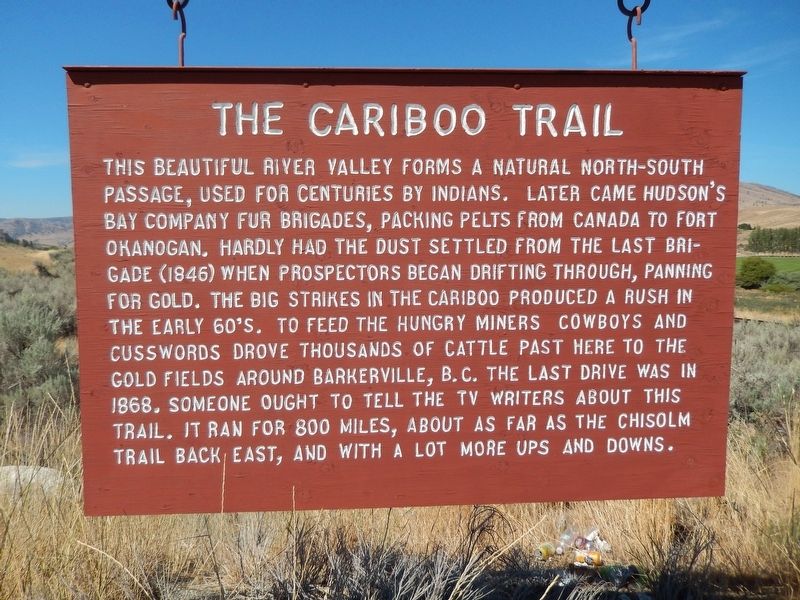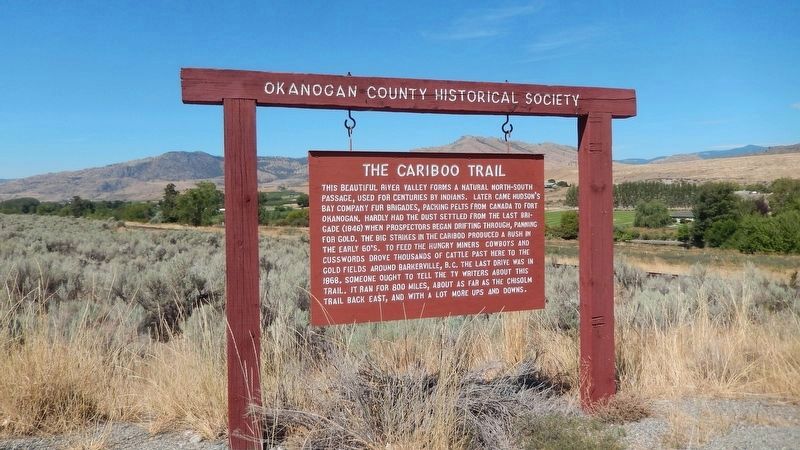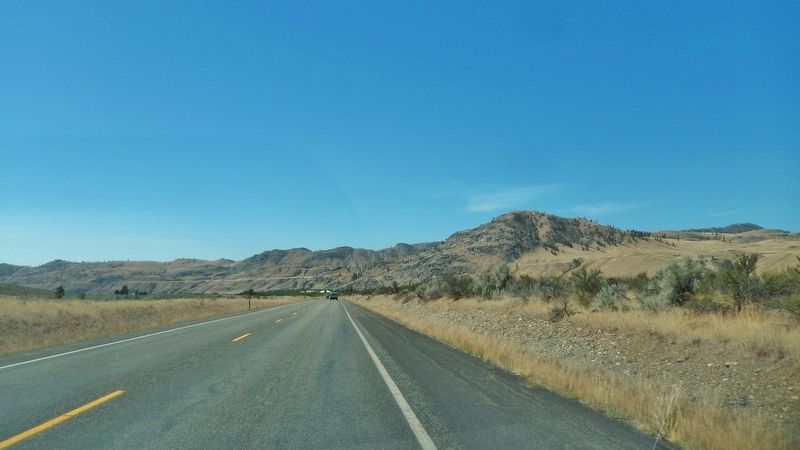Near Okanogan in Okanogan County, Washington — The American West (Northwest)
The Cariboo Trail
Erected by Okanogan County Historical Society.
Topics. This historical marker is listed in these topic lists: Industry & Commerce • Native Americans • Roads & Vehicles.
Location. 48° 18.406′ N, 119° 37.882′ W. Marker is near Okanogan, Washington, in Okanogan County. Marker is on U.S. 97, 3.7 miles south of Osprey Drive (State Highway 20), on the right when traveling south. Marker is located at the south end of a large pull-out on the west side of the highway, overlooking the Okanogan River. Touch for map. Marker is in this post office area: Okanogan WA 98840, United States of America. Touch for directions.
Other nearby markers. At least 4 other markers are within 15 miles of this marker, measured as the crow flies. The Curtis Sheep Slaughter (approx. one mile away); Okanogan County World War I Memorial (approx. 4.7 miles away); Scotch Creek Basin (approx. 13.8 miles away); Riverside (approx. 14.7 miles away).
More about this marker. This is a large painted wooden "bill-board" style marker, suspended from a heavy wooden frame.
Also see . . .
1. The Old Cariboo Trail. From Wallula Gap on the Columbia River, the Old Cariboo Trail was built over the route of the Hudson's Bay Brigade Trail, which began at Fort Okanagan, near the Wallula Gap area on the Columbia River and passed north through Eastern Washington along the Columbia River to the Okanogan River and north into British Columbia. Hudson's Bay Company fur traders brigades followed this route up until 1847, when the Hudson's Bay Company withdrew from the Northwest. Cattle drives were common along this trail to supply the gold miners, who arrived in British Columbia in the late 1850s. (Submitted on January 22, 2019, by Cosmos Mariner of Cape Canaveral, Florida.)
2. Cariboo Gold Rush. The Cariboo Gold Rush was
a gold rush in the Colony of British Columbia, which earlier joined the Canadian province of British Columbia. The first gold discovery was made at Hills Bar in 1858, followed by more strikes in 1859 on the Horsefly River, and on Keithley Creek and Antler Creek in 1860. The actual rush began until 1861, when these discoveries were widely publicized. Towns grew up, the most famous of these being Barkerville. Other important towns of the Cariboo gold rush era were Keithley Creek, Quesnel Forks, Antler, Richfield, Quesnellemouthe, Horsefly and, around the site of the Hudson's Bay Company's fort of the same name, Alexandria. (Submitted on January 22, 2019, by Cosmos Mariner of Cape Canaveral, Florida.)
Credits. This page was last revised on January 25, 2019. It was originally submitted on January 22, 2019, by Cosmos Mariner of Cape Canaveral, Florida. This page has been viewed 1,002 times since then and 112 times this year. Photos: 1, 2, 3. submitted on January 22, 2019, by Cosmos Mariner of Cape Canaveral, Florida. • Andrew Ruppenstein was the editor who published this page.


